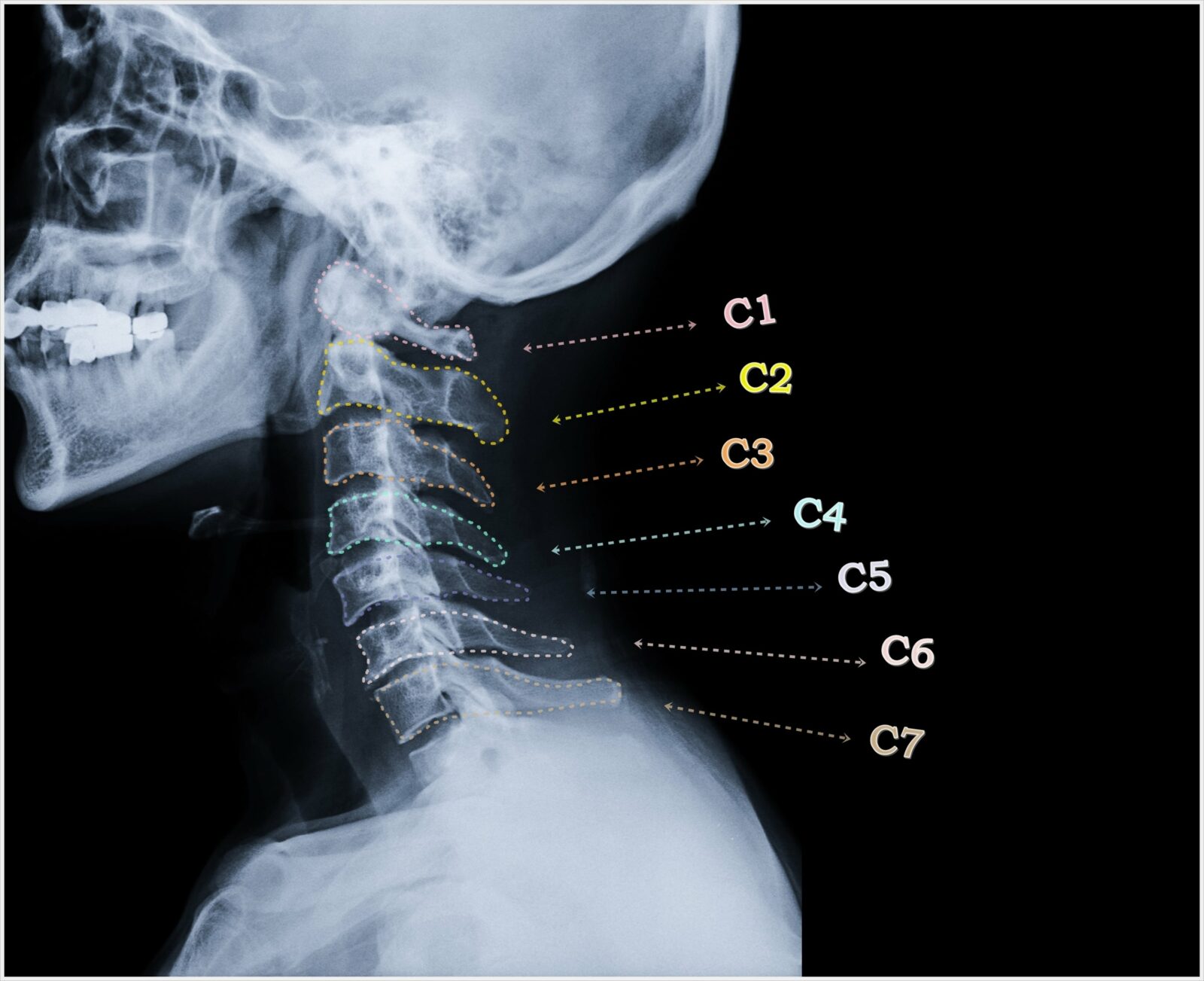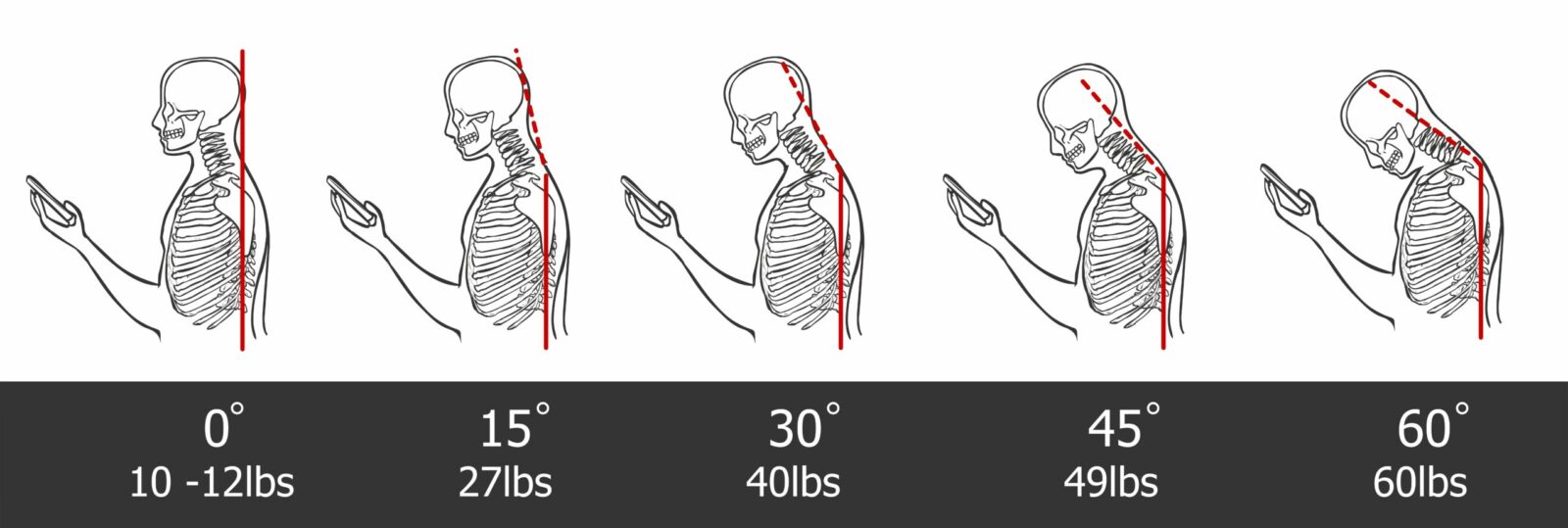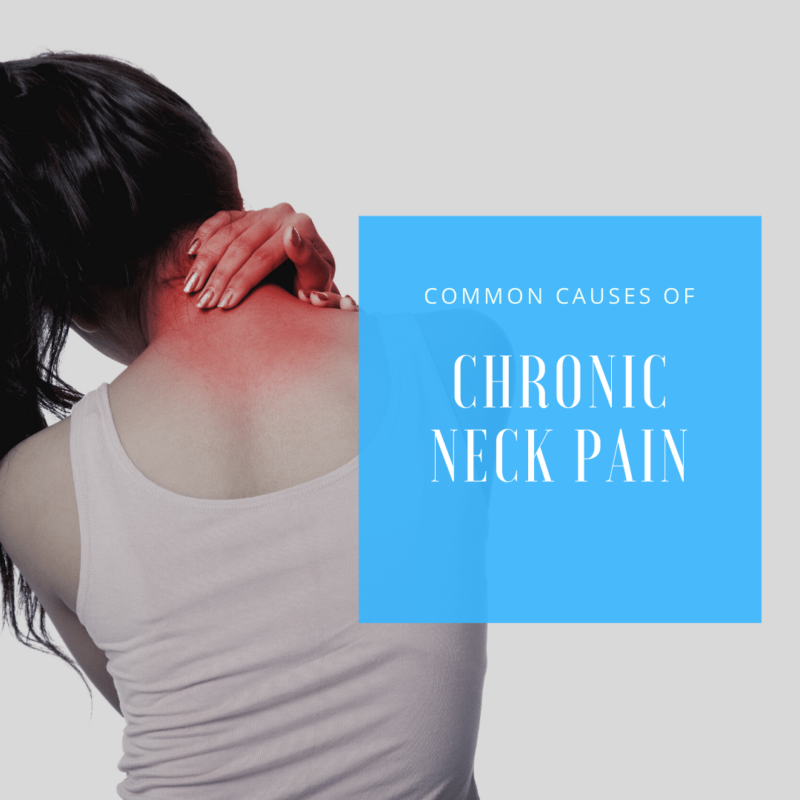Neck pain is unfortunately common and Spine-Health estimates that as many as 15% of Americans experience neck pain for at least one full day every three months. However, neck pain can also be chronic, meaning that it persists or regularly recurs for longer than three months. There are a number of things that can cause neck pain, and although most are not serious, they can still affect your overall sense of well-being.

In order to understand what causes chronic neck pain, we must first look briefly at the anatomy of the neck. The neck is composed of seven cervical vertebrae and is divided into two major segments. The craniocervical junction (CCJ) is made up of the back of the head and the first two cervical vertebrae. The subaxial spine is made up of the C3-C7. Collectively, all the cervical vertebrae work together to support the weight of the head and allow for movement of the head and neck.
There are a few unique characteristics associated with the cervical spine that have the potential to contribute to chronic neck pain. One of the first things that sets the cervical spine apart from other spinal regions is that the cervical vertebrae are smaller in order to allow for a much greater range of motion. The trade off, however, is that this can increase the risk of spinal injury. It is also important to note that the cervical spine contains the axis (C1) and atlas (C2), which have their own respective anatomical differences.
Now that we know more about the anatomy of the cervical spine, let’s take a look at some of the most common causes of neck pain:
Cervical Spondylosis
Cervical spondylosis is a general term used to describe any type of spinal degeneration that occurs within the cervical spine, or neck. Cervical spondylosis can be caused by cervical degenerative disc disease (degeneration of the spinal discs), cervical osteoarthritis (degeneration of the cartilage), cervical herniated disc (damaged disc), cervical foraminal stenosis (narrowing of the bony opening where the nerve root exits the spinal canal), or cervical central stenosis (narrowing of the spinal canal).
Traumatic Injury
Another common cause of neck pain is trauma to the cervical spine. Any time an excessive amount of force is exerted on the cervical spine, there is the possibility of damage to the discs, joints, muscles, ligaments, bones, and other structures. One of the most common traumatic injuries associated with neck pain is whiplash. Whiplash generally occurs during an automobile accident and is characterized by the neck moving forward and then being “whipped” backwards quickly. In addition to whiplash, some other types of traumatic injuries that can affect the cervical spine include: sports collisions or falls, slipping on ice or water, or falling from a height taller than one’s body. After a traumatic injury, neck pain is usually acute, however it can become chronic in some cases.
Poor Posture
Besides degenerative issues and traumatic accidents, neck pain can also be the result of poor posture. The ideal neck posture places the ears directly above shoulders with the shoulders back and the chest open. This is considered a neutral posture that does not place strain on the cervical spine. However, for every inch that the head drifts forward, an additional 10 lbs. of weight is exerted on the joints, discs, and muscles of the neck. The result is generally chronic neck pain and/or the exacerbation of other neck conditions.











